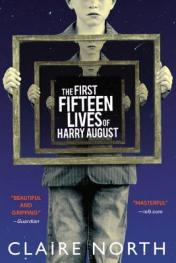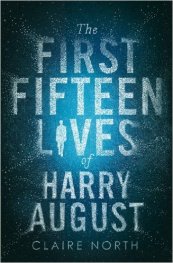Harry August is reborn, ad nauseam, as the same person, in the same life, at the same point in time. As per the book’s title, the novel relates the salient details from his first fifteen lifecycles, but the narration is not  chronological (the novel’s first sentence is from his eleventh life). Harry meets others like him (although their kind is rare) who have established a secret organization called the Cronus Club. They refer to themselves as orobourans (the circular snake, eating its tail) and/or kalichakras (a Vajrayana Buddhist term for the wheel of time). Kalichakras are rare, but Harry is even rare among his kind: he is a mnemonic, retaining all memories from previous lives. A ‘regular’ kalichakra retains quite a bit of their previous-life memories, but these memories fade during additional lifecycles.
chronological (the novel’s first sentence is from his eleventh life). Harry meets others like him (although their kind is rare) who have established a secret organization called the Cronus Club. They refer to themselves as orobourans (the circular snake, eating its tail) and/or kalichakras (a Vajrayana Buddhist term for the wheel of time). Kalichakras are rare, but Harry is even rare among his kind: he is a mnemonic, retaining all memories from previous lives. A ‘regular’ kalichakra retains quite a bit of their previous-life memories, but these memories fade during additional lifecycles.
The knowledge that is gained in each kalichakra’s lifetime gives them an inequitable advantage, which they use to advantage. It is unknown whether the kalichakras are reborn in the same universe, or whether they are born into an alternate reality each lifetime, but their timelines generate the same major events (e.g.: WWII) each time they live through them, and they do not attempt to interfere with any major event. Kalichakra have, in the past, attempted to change history for the better, but the effects were devastating and the Cronus Club deals severely with kalichakras who attempt to meddle.
 The plot unfolds in a manner quite similar to a time-travel story: a kalichakra is changing the future and, with each successive life-cycle, the end of the world is occurring earlier (kalichakras from the future deliver this message back in time through a chain of re-births). Harry must find and defeat this event-changing kalichakra, a campaign that lasts multiple lifetimes.
The plot unfolds in a manner quite similar to a time-travel story: a kalichakra is changing the future and, with each successive life-cycle, the end of the world is occurring earlier (kalichakras from the future deliver this message back in time through a chain of re-births). Harry must find and defeat this event-changing kalichakra, a campaign that lasts multiple lifetimes.
The novel delves into the ennui of the kalichakra, and Harry frequently ponders the purpose of existence. The themes include memory, companionship, love, friendship, intrigue and torture, but there is no grand romance tangled into the tale, which I think is better without it.
The plotting and world-building is very good; the pace of the story kept me involved enough that I was able to suspend disbelief regarding elements that didn’t quite work for me.
Harry was definitely the protagonist; but, after I’d finished the novel, I wondered if there really was a villain. There was an antagonist who performed villainous acts, and the ends do not, in my opinion, justify the means, but the antagonist’s ultimate goal could be interpreted as divine.
Recommended.
Note: there two other novels that have used this particular ‘rebirth’ set up (Ken Grimwood’s Replay (1986) – and Kate Atkinson’s Life After Life (2013)), but all three works use the plot device differently.
